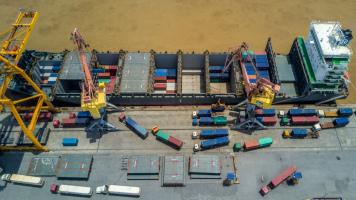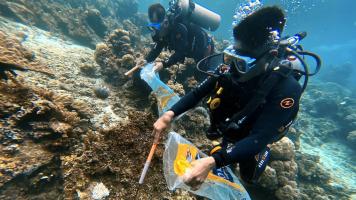By joining the initiative, companies are essentially making a statement of intent to participate as a user, supplier, or enabler of near-zero steel production by 2030.
Businesses across Southeast Asia are invited to join a newly launched global initiative to decarbonize the steel supply chain, said Greenhouse, an Australia-based climate action platform and ecosystem that connects climate tech innovators to investors, academic experts, corporate partners, and other organizations.
The initiative, Near-Zero Steel 2030, is in partnership with the World Economic Forum’s First Movers Coalition, Boston Consulting Group, Deloitte, ResponsibleSteel, and RMI.
Businesses joining the initiative are essentially making a statement of intent to participate as a user, supplier, or enabler of near-zero steel production by 2030. Joining is completely free.
The Near-Zero Steel 2030 initiative is an opportunity for Asian companies to take the lead on stimulating demand and accelerating the supply of near-zero steel, said Greenhouse, a new contributing partner of the Asian Development Bank's Southeast Asia Development Solutions Knowledge Innovation Platform.
Greenhouse noted that Asia produces three-quarters of the world’s steel, and yet there is no commercially mature technologies that can decarbonize this hard-to-abate sector in the region. This poses a challenge to the world maintaining global temperatures at a level consistent with a growing and thriving Asia.
As part of the initiative, Greenhouse hopes to engage with buyers and suppliers of steel across Asia, as well as companies developing technologies in renewables; green hydrogen; and carbon capture, utilization, and storage that will play a role in decarbonizing the global steel supply chain.
The problem
Steel is one of the world’s most important engineering and construction materials. It is essential for housing, retail facilities, critical infrastructure, machinery, vehicles, and more. It is also a critical material for many technologies that will deliver the energy transition, such as solar panels, wind turbines, electric vehicles, and advanced manufacturing processes.
However, the supply chain for steelmaking already produces 7%–10% of global emissions and demand for steel is expected to rise by up to 30% by 2050, according to Mission Possible Partnership projections. Steel is also considered a "hard-to-abate" sector, as there are no commercially mature technologies that can reduce its carbon footprint as a comparable cost to traditional steelmaking.
The problem is particularly acute in Asia, with almost three-quarters of the world’s steel made in the region.
Without scaling decarbonization technology this decade, global companies and governments will struggle to meet their net-zero 2050 goals. Indeed, the International Energy Agency estimates that for the steel sector to reach net zero by 2050, there needs to be a drop in emissions of 25% by 2030.
This makes steel a particularly important industry for global collaboration such as that being led by the First Movers Coalition, a group of companies using their purchasing power to create early markets for innovative clean technologies across hard-to-abate sectors.
The solution
The Near-Zero Steel 2030 initiative is a catalyst to bring about near-zero emissions steel deployment by 2030.
The initiative works towards this goal by:
- Increasing the demand signal for near-zero steel. Identify credible demand signals from steel purchasers around the world and connect them with steel suppliers to catalyze scaled investment and offtake agreements. This will ultimately lead to production and delivery of near-zero emissions steel by 2030.
- Enabling commercial scale investment. Trigger investment from public and private sector sources to scale near-zero emissions iron and steelmaking technologies, such as hydrogen direct reduction of iron and carbon capture use and storage. In addition, support investment in renewable energy generation and grid improvements.
- Promoting collaboration. Source enabling technology companies and facilitate their connection to iron and steel makers. For example, these companies might produce hydrogen for direct reduction of iron and carbon capture technology for traditional blast furnaces retrofits.
- Showcasing ambition and innovation. The results of this challenge will be used to showcase high potential near-zero emissions steel projects and to spotlight innovation and ambition.
This initiative is broken into three sub-challenges:
- Near-Zero Steel Demand. This challenge is for direct and indirect purchasers of steel from both corporate and government sectors to express interest in purchasing near-zero emissions steel by 2030.
- Near-Zero Steel Supply. This challenge is for iron and steel makers to share details of their near-zero emissions projects that could supply steel; and create visibility to partnering opportunities.
- Near-Zero Steel Enabling Technologies. This challenge is for innovators in the hydrogen, carbon capture, renewables, and other technologies that could benefit iron and steel makers.
Challenge submissions close in January 2024. Watch the introductory video.
Join the initiative.


